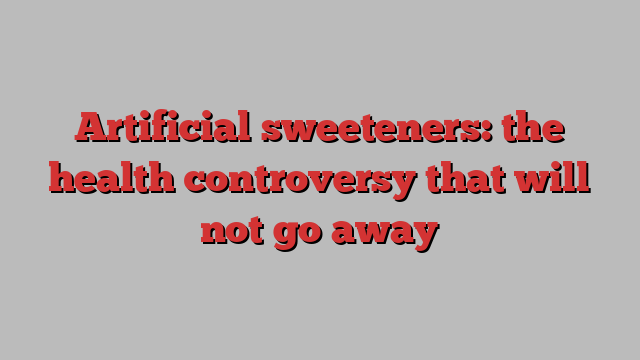
When Dana Small, a professor of psychiatry at Yale University, decided to investigate the impact of artificially sweetened drinks on the brain and gut, she made a startling discovery.
Participants in her study who were assigned drinks containing sucralose, a popular artificial sweetener, displayed no negative effects. But a cohort given the same drink with a liquid form of carbohydrate added — intended purely as a control group for the main study — showed signs of impaired metabolism, potentially leaving them vulnerable to problems such as weight gain and glucose intolerance.
Describing the unexpected finding as “a smoking gun”, Small said it suggested that recommending people with diabetes drink diet coke could actually do more harm than good if they consumed it with other food — such as french fries.
Her study, published in 2020, added to a growing body of work that challenges the long-held view that sweeteners offer a way to satisfy sugar cravings while avoiding its well-documented risks.
But it also underlines how far scientists are from fully understanding the physiological impact of the multiple kinds of sweetener that have become ubiquitous in the foods and drinks on supermarket shelves.
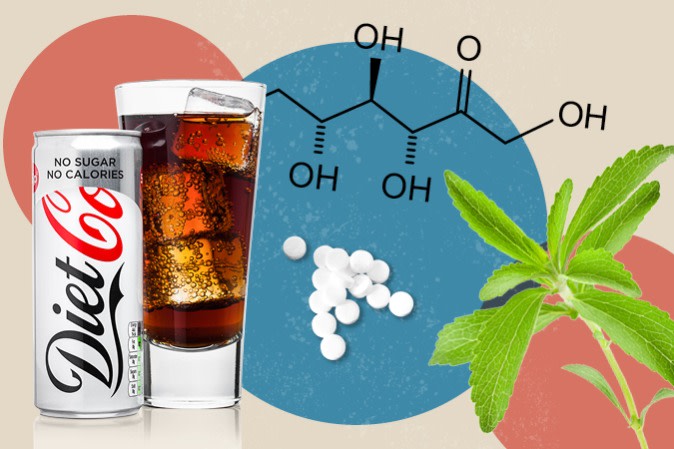
Artificial vs natural sweeteners
Artificial
Sucralose: Discovered in 1976. Sucralose is widely sold under the brand name Splenda and is about 600 times sweeter than table sugar
Aspartame: Discovered in 1965. It is marketed under the name NutraSweet, among others. It is about 200 times sweeter than table sugar
Saccharin: First used in 1879, and used to sweeten foods and beverages under various names, including Sweet’N Low. It is 200-700 times sweeter than sugar
Acesulfame K: A heat-stable sweetener and flavour enhancer discovered in 1967. It is about 200 times sweeter than sugar
SOURCE: FDA
Natural
Stevia: Derived from the South American plant of the same name, its sweetness was noted by an Italian-Swiss botanist in 1901. Sold as Truvia and other brands, it’s about 350 times sweeter than sugar
Monk fruit extract: Sometimes known as Luo Han Guo, monk fruit is a melon-like plant grown mostly in China. Its calorie-free extract is about 200 times sweeter than sugar
Allulose: First identified in wheat leaves in the 1940s, it was only commercialised in 2015. Unlike most sweeteners, it is less sweet than sugar but replicates its ‘mouth feel’
SOURCE: stevia.com, Tate&Lyle
For Small, who is now based at Canada’s McGill University, uncertainty is in itself grounds for caution. “We know enough to know that we don’t know enough,” she says. “And so I think that the feelings of safety around artificial sweeteners are not warranted.”
The shift in thinking is posing challenges for scientists, policymakers and manufacturers as they adjust to the emerging research, and consumers’ changing expectations and concerns.
Questions about the impact of artificial sweeteners have acquired new urgency in an era when manufacturers’ desire to cut costs, alongside a wave of sugar taxes around the world, has prompted food and drinks companies to swap out sugar for sweeteners in thousands of varieties of drinks, confectionery, baked goods and processed foods.
Controversial history
Question marks over safety have dogged artificial sweeteners almost since the commercial production of saccharin began in 1886. Matters came to a head in 1977 when a Canadian study linked saccharin to bladder tumours in rats. Although the findings were bitterly contested by the industry, the US kept the ingredient on a list of known carcinogens until 2000.
But in May, the safety issue resurfaced when the World Health Organization recommended that non-sugar sweeteners should not be used to support weight loss or the maintenance of healthy blood glucose levels. Based on a review of existing studies, the body pointed to evidence suggesting “there may be potential undesirable effects from long-term use of NSS, such as an increased risk of type 2 diabetes, cardiovascular diseases, and mortality in adults.”

In July, the International Agency for Research on Cancer, which is part of the WHO, added to the climate of concern by concluding that one much-used sweetener, aspartame, was “possibly carcinogenic to humans”.
Jotham Suez, an assistant professor at Johns Hopkins University’s Bloomberg School of Public Health and a leading researcher in the field, says that in the past it has been “difficult to say that the sweeteners are causing these conditions, rather than [that] people with a predisposition for these conditions are consuming sweeteners”.
However, he believes the work that he and others have undertaken has provided firm evidence of their potentially damaging impact. He points to a study he led last year which found that four different sweeteners each altered gut bacteria in those who consumed them. He was able to link these alterations in the microbiome — the roughly 100tn microbes that live inside us — to disrupted blood glucose levels.
The ramifications may go wider, he suggests. “We do know that the gut microbiome plays numerous functions in metabolic health and cancer formation, so that’s a red flag.”
Duane Mellor, a senior teaching fellow and nutritional expert at Aston Medical School in the UK, questions how significant the changes observed in Suez’s study are. He points out that in most respects the state of the microbiome in test subjects returned to normal quite quickly after they stopped consuming the sweeteners.
“The clinical relevance is not known because it’s quite a small effect,” Mellor says. “It’s not going to turn someone from not having diabetes to having type 2 diabetes.”
Not only the harms but the benefits of artificial sweeteners are probably overstated, he argues: “They have a place but they’re not a dietary panacea. I think we’re getting to a point in nutrition now where we realise that we shouldn’t depend on one thing to try and solve our dietary issues.”
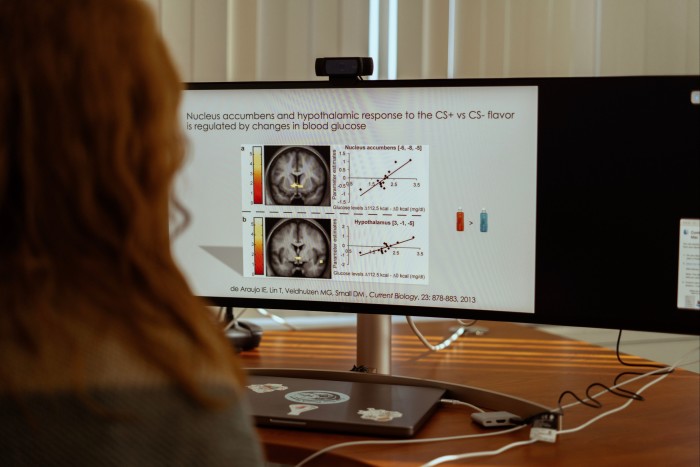
Acknowledging that many studies have generated conflicting evidence, with some showing sweeteners can detrimentally impact health but others suggesting a neutral, or even beneficial, impact, Suez says: “The short answer is that we think it’s personalised.”
His research has established that the individual make-up of each person’s microbiome may make them more or less susceptible to sweeteners’ harmful effects, a finding being explored further not only by his own lab, but by other researchers.
Small agrees that more research is needed but, persuaded by the results of her own study, she has already taken steps to protect her family’s health. She still occasionally enjoys a Diet Coke but is sure to leave a gap of several hours before eating carbohydrate-rich foods. Nor does she allow her young son to consume foods with artificial sweeteners, a prohibition that is becoming ever more onerous to enforce as manufacturers add the ingredient to a wider array of products in an effort to reduce costs and calories.
“There’s artificial sweeteners in over 3,000 foods and it’s becoming worse [both] because there’s pressure to have reduced calories, but also artificial sweeteners are cheaper than sugar,” she adds.

A study led by Natalia Rebolledo, a researcher at the Center for Research in Food Environments and Prevention of Chronic Diseases Associated with Nutrition in Chile, found that after the country introduced rules imposing stricter rules on the advertising and labelling of foods high in saturated fat and sugar, purchases of drinks containing sweeteners increased.
Rebolledo says a study she carried out with colleagues at the University of North Carolina had shown that not only adults but children had increased their intake of sweeteners, particularly of sucralose and the natural sweetener stevia, a potentially worrying development given uncertainty about how the products affect growing bodies and brains.
Partly as a result of the Chilean experience, when Mexico and Argentina later introduced their own restrictions, they mandated that certain products should include a warning label saying “this product contains sweeteners and it’s not recommended [for] children”, she adds.
But she does not believe the doubts being raised over sweeteners should deter other countries from implementing measures aimed at limiting the consumption of sugar, where the evidence of potential harm to children and an association with obesity, cancer and diabetes “is very clear”.
In contrast, the evidence about sweeteners is only starting to emerge. “I think we should proceed with caution,” she says. “It’s not like saying, ‘Oh, we shouldn’t regulate sugar.’ I think we should regulate sugar and keep regulating it. But at the same time we need to keep observing what’s happening with the sweeteners as well.”
Industry unperturbed
Despite the uncertainties about the effects of these substitutes, the crackdown on sugar has been a boon for companies that produce ingredients (including sweeteners) for food manufacturers, such as Tate & Lyle and Ingredion, along with Cargill and Archer Daniels Midland, which are better known for their commodities processing and trading businesses.
As well as supplying companies with core ingredients, Tate & Lyle and Ingredion offer services to help companies to reformulate recipes — for example, to reduce the salt, sugar or fat content of a product. Cadbury enlisted Tate & Lyle to reduce the sugar content of its flagship Dairy Milk bar by 30 per cent for a UK trial.
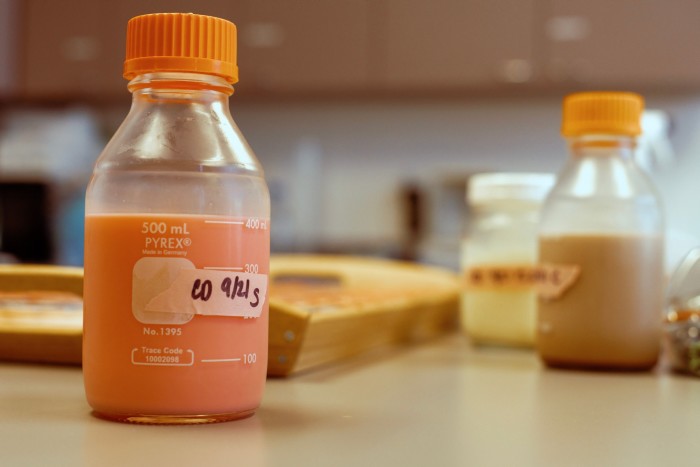
Kavita Karnik, global head of nutrition at Tate & Lyle, says there is insufficient evidence linking sweeteners with adverse health impacts. “Sweeteners are one of the highest, maximally scrutinised ingredients in the world,” she says. “We have been studying sucralose for 30-plus years . . . It’s been in the market for 30 years [with this] without a single real issue.”
Tate & Lyle was originally a sugar refiner, but sold that business in 2010 to become an ingredients company. One of its flagship products is Splenda, or sucralose, which is 600 times sweeter than sugar and was adapted accidentally in the company’s lab from sucrose in 1976.
Responding to the work carried out by Suez and others, Karnik says that the company’s sweeteners are used in such tiny doses that they would have little impact on human gut health. “Compared to the massive quantity of gut microbiota you have, it’s not really practical. It’s one of those horror stories,” she adds.
A common justification for sweeteners is that they are indispensable when it comes to managing type 2 diabetes and obesity. Compared with sugar, low-calorie sweeteners provide better blood glucose and blood insulin responses in people living with diabetes.
The International Sweeteners Association, which represents companies heavily exposed to sweeteners such as PepsiCo, Tate & Lyle, Cargill and Mars Wrigley, says: “At a time when obesity and non-communicable diseases . . . remain major global health challenges, low [or] no-calorie sweeteners provide consumers choice with safe alternatives to reduce sugar and calorie intake and the risk of dental caries.”
Frances Hunt-Wood, the association’s secretary-general, adds: “Before being approved for use on the market, all low [or] no calorie sweeteners, irrespective of their origin, have undergone a thorough safety assessment by the competent regulatory authority.”
From a public health perspective, proponents of sweeteners say it is unrealistic to expect people to avoid highly sweetened food and drinks altogether. “You are telling them to drink water or to drink full sugar,” Karnik says. “And that doesn’t seem like a good solution for public health.”
But as more research is published warning of the health impacts of low and no-calorie sweeteners, companies that are heavily reliant on them for sugar reduction have began to look to alternatives.
In 2015, PepsiCo removed aspartame from Diet Pepsi and replaced it with stevia following consumer concerns over its effects, and after a steady fall in sales of the diet drink. But the reformulation failed to prevent a further drop in sales, and the drinks and snacks giant reintroduced the sweetener a year later.
The headlines about aspartame and other sweeteners were “unhelpful for sentiment”, says Barclays analyst Alex Sloane, but companies are not concerned about regulation. Instead, manufacturers are hedging against negative consumer perception of sweeteners by switching to “natural” sweeteners.
“If you’re a manufacturer thinking about a new product development or reformulation, you are more likely to use stevia or monk fruit, rather than aspartame,” he says. “From a consumer point of view, things that are derived from nature are perceived as healthier.”
Despite their credential as “natural” sweeteners, manufacturers insist that in from a food safety perspective there is no difference between “natural” and “artificial” low-calorie sweeteners — the only difference is consumer attitudes. “The perception is that natural is better, but the guidelines don’t differentiate,” says Karnik.

Even so, Tate & Lyle has refocused its investment and R&D on stevia in response to client demand. Ingredion reported a surge in interest for reformulating with stevia following the WHO decision on aspartame. Approximately 90 per cent of Ingredion’s sugar-reduction business is stevia.
Question marks around the safety of sweeteners have coincided with a drive by consumer goods companies to cater to a more health-conscious customer that wants simpler, less processed packaged goods. Companies are increasingly focused on “clean labels” — packaging that indicates trustworthy natural products, without artificial ingredients or ingredients whose names consumers cannot pronounce.
But other Ingredion customers were more concerned with driving costs down. It depends on the “brand promise”, says Nate Yates, who leads Ingredion’s global sugar reduction platform, adding that artificial sweeteners were up to 80 per cent cheaper than natural sweeteners.
“The most important point is consumer perception — do they perceive that ingredient to be something more natural, plant-based, not with a lot of words,” says Yates.
Ingredion says its customers did not anticipate a regulatory crackdown on sweeteners for the foreseeable future, pointing to the need to combat an “epidemic” of obesity. “The amount of diabetes and obesity occurrence in developing countries is staggering . . . We don’t see that trend changing — that lends itself to solutions that include zero-calorie sweeteners,” he says.
Despite the industry’s confidence in the safety of sweeteners, companies are looking for ways to reduce the sweetness of products, perhaps in anticipation of another backlash down the line.
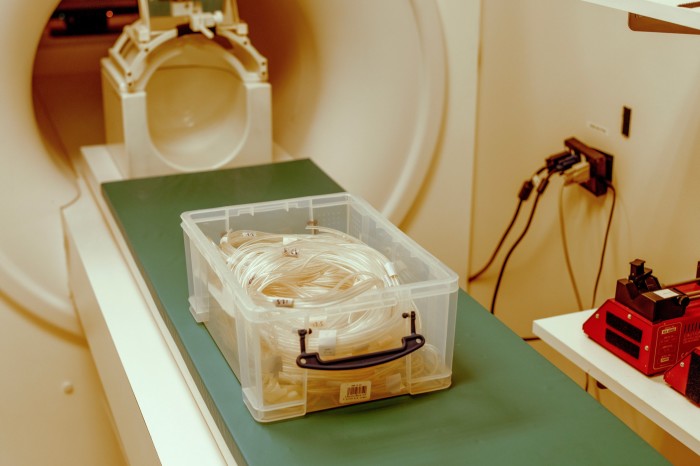
Nestlé has developed a sugar-reduction technology, which uses an enzymatic process to reduce intrinsic sugar in ingredients such as malt, milk and fruit juices by up to 30 per cent.
“This new technology is a true breakthrough, as we can reduce sugar without adding sweeteners while preserving a great taste,” said Stefan Palzer, Nestlé’s chief technology officer, when the company announced the project in July.
“Our scientists discovered that the sugar reduction generates prebiotic fibres that support the microbiome, which is an additional benefit,” he said.
Companies face particular challenges in reducing the sugar content of goods in which sugar adds bulk and structure to the product — in baked goods, for example. Fibre has become a star ingredient in this respect, because in certain products fibre can replace the bulk and “mouth feel” of sugar when combined with sweeteners.
This comes with the added advantage for food companies that they can add “high in fibre” to the label as well as “no” or “low sugar”.
Another innovation in the pipeline is the use of sweet proteins such as brazzein and thaumatin, biological protein molecules derived primarily from west African fruits such as katemfe.
Even as the industry continues to experiment, Rebolledo in Chile is hoping that the safety concerns raised by the WHO will make it easier to secure funding for research into sweeteners’ effects. However, the number of different varieties of sweeteners makes it harder to get definitive answers, she suggests.
Sucralose, for example, is “a chemical compound that is different than stevia”. More work is needed to determine “which mechanisms are valid for each type of sweetener, so I hope . . . that we will be able to get more funds to see how each of them behave. And then we can make an informed decision [about] what we should choose. But we are not there yet.”
Small agrees that more research is crucial. “There’s a ton of evidence now that artificial sweeteners are not inert, that they do have an impact on the body,” she says. Large-scale human studies are needed to fully understand their effects.
She recognises, however, that it “also bad to have too much sugar” and suggests that clarity about the correct balance to strike is badly needed — yet remains elusive.
“What is the happy medium? What is the best advice? I don’t think we know.”